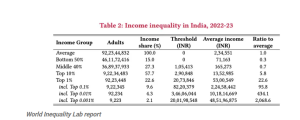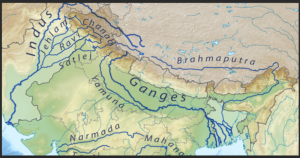

Centre notifies its fact check unit to red-flag news it considers false
Syllabus: GS-II Subject:Polity Topic:Institutions
Issue: Fact checking unit
Context:Union Electronics and IT Ministry notified a Fact Checking Unit (FCU) under the Press Information Bureau.
FCU Functions:
- It is tasked with flagging false information related to the Central government on social media.
- Social media platforms are mandated to take down flagged content or lose their safe harbour privileges.
- Safe harbour refers to provisions in law(Section 79 of IT Act 2000) that protect online platforms like Facebook or Twitter from being held liable for content posted by their users.
Criticism:
- Chilling effect on free speech and expression under Article 19(1)(a).
- Concerns about press freedom and government impartiality.
- Could be used to suppress criticism of the government.
Source: The Hindu
Don’t use counseling to turn LGBTQ+ persons against their own identity, says Supreme Court
Syllabus: GS-II, Subject: Polity, Topic: Rights issues, Issue: LGBTQ+ identity.
Context: Supreme Court issued guidelines for dealing with habeas corpus petitions by LGBTQ+ community members.
Synopsis:
- All courts follow constitutional values and protect individuals’ free will.
- Recognizes the importance of chosen families(friends,partners) for LGBTQ+ individuals.
Related case laws:
- Navtej Singh Johar Union of India: Section 377 of the Indian Penal Code, which criminalized homosexual acts, was struck down.
- NALSA vs. Union of India: Recognized the rights of transgender individuals under Articles 14, 15, and 21 of the Constitution.
- The Puttaswamy Case affirmed sexual orientation as an important aspect of privacy protected under the Constitution.
Prelims Connect(Terminology in news):
| LGBTQ+ :
● It stands for Lesbian, Gay, Bisexual, Transgender, and Queer, encompassing various sexual orientations and gender identities. Habeas Corpus: It’s a legal term from Latin that literally translates to “you shall have the body.” ● It’s a legal procedure where a court can order someone who’s holding another person in custody (like a prison official) to bring the prisoner before the court. |
Source: The Hindu
India’s top 1% income and wealth shares have reached historical highs: World Inequality Lab
Syllabus: GS-III; Subject:Current Affairs Topic: Indices and reports
Issue: Income inequality.
Context: “Income and Wealth Inequality in India: The Rise of the billionaire raj” paper released by World Inequality Lab.
Key points:
- Income distribution is highly skewed, with the top 1% earning significantly more than the average Indian.


- Trend shows declining inequality post-independence, followed by sharp surge post liberalisation reforms.
- Urgent need for policy interventions to reverse inequality trends and ensure equitable growth.
- Proposal for a “super tax” on the wealthiest families’ net wealth to fund public investments.
Source: Indian Express
NREGS wages set to be hiked, Govt gets EC nod after poll conduct code.
Syllabus: GS-II, Subject: Current affairs, Topic: Schemes/ Policies/ Programmes, Issue: Wage revision of MNREGA.
Context: The Election Commission approved the increase of MGNREGA wages after the moral code of conduct came into force.
Synopsis:
- Wages determined based on Consumer Price Index (Agricultural Labourers) reflecting rural inflation.
- Around six crore rural households benefited from MGNREGA this year, with 35.5 lakh completing 100 days of work.(Data for Mains)
Prelims Connect(Schemes/Policies/Programmes)
|
Mahatma Gandhi National Rural Employment Guarantee Act (MGNREGA)2005. ➢ Guaranteed Employment: 100 days of unskilled work at government-set minimum wage. ➢ Eligibility: Citizen of India above 18 years, rural household, willing to do unskilled work. ➢ Unemployment Allowance,if no work provided within 15 days. ➢ Social Audit: Mandated for all MGNREGA works for community participation and government accountability.
|
Source: Indian Express
Multilateral treaties required for Indus, Ganga, and Brahmaputra management, says report.
Syllabus: GS-I, Subject: Geography, Topic: Resources – World and India, Issue: Multilateral treaties on rivers.
Context: Reports by ICIMOD and the Australian Water Partnership on water sharing treaties.
Highlights of the Report:
- Integrated river basin management is crucial for resilience to climate change in South Asia.
- Integrated river basin management refers to a basin-wide approach to river planning, backed by quality data sharing on water availability, biodiversity and pollution between all stakeholders.
- Underscores the necessity for multilateral treaties, particularly focusing on the Indus, Ganga, and Brahmaputra rivers.
Recommendations:
- Greater ‘hydro-solidarity‘ and climate diplomacy urged among countries.
- Emphasis on harnessing indigenous and local knowledge for crisis resolution.
- Plugging data gaps, enhancing water management, early warning systems, and disaster management.


Prelims Connect:
| Indus:
✔ Originates in the Tibetan Plateau. ✔ Flows through India Pakistan into the Arabian Sea. ✔ Governed by the Indus Water Treaty (1960) between India and Pakistan Ganges: ✔ Originates in the Himalayas (Gangotri Glacier). ✔ Flows through India and Bangladesh. ✔ Initiatives like Namami Gange focus on its cleanup. Brahmaputra: ✔ Originates in Tibet, flows through India’s northeastern states. ✔ Joins the Ganges in Bangladesh. |
Source: Indian Express
Daily Editorials
The big promise of small-scale LNG as fuel for India, with first SSLNG plant commissioned
Syllabus: GS-I, Subject: Geography, Topic: Resources – World and India, Issue: Petroleum and Natural Gas
Context: India’s first small-scale liquefied natural gas (SSLNG) unit at GAIL (India) Ltd’s Vijaipur complex in Madhya Pradesh.
SSLNG (Small-Scale Liquefied Natural Gas)
- Liquefies and transports natural gas on a smaller scale using unconventional methods.
- Serves users in pipeline-unconnected regions via specialized trucks and vessels.
- Avoids the necessity for extensive liquefaction, regasification, and transportation infrastructure.
- The SSLNG chain can originate from large LNG import terminals or areas with ample gas supply, establishing small liquefaction plants.
Significance of SSLNG
- The government aims to increase the share of natural gas in the primary energy mix to 15% by 2030.
- SSLNG offers a fast and scalable solution to expand the reach and consumption of natural gas.
India to generate 600 kilotonnes of solar waste by 2030: What a new study says
Syllabus: GS-III, Subject: Environment and Ecology, Topic: Waste Management, Issue: Solar waste
Context: Solar waste produced by India is expected to reach 600 kt by 2030
Solar waste:
- Manufacturing waste comprises scrap and waste from failed quality tests.
- Field waste includes waste from transporting, handling, damage during operation, and end-of-life modules.
Two broad methods of recycling solar panels:
- Conventional recycling involves mechanical processes but cannot recover valuable materials like silver and silicon.
- High-value recycling uses mechanical, chemical, and thermal processes to recover valuable materials like silver and silicon.
The way ahead
- Establish a comprehensive database of installed solar capacity to estimate future solar waste.
- Incentivize recyclers and stakeholders to effectively manage solar waste.
- Focus on creating a market for solar recycling to address the immediate and future waste issues.
Source: Indian Express
BJP government must rethink scrapping of Free Movement Regime in Manipur and beyond
Syllabus: GS-III, Subject: Internal Security, Topic: North -East regional issues, Issue: Free Movement Regime(FMR)
Context: Free Movement Regime(FMR) between India and Myanmar was suspended.
- India is planning to fence the entire India-Myanmar border with a hybrid surveillance system.
Significance of FMR:
- The India-Myanmar border is a colonial legacy, dividing communities with shared ethnicity, history, and culture.
- The FMR has been a lifeline,facilitating movement of residents living within 16 km of the border.
Reactions after suspension of FMR:
- Mizoram and Nagaland passed unanimous resolutions condemning the decision to withdraw the FMR.
- Nagas, Mizos, Chins, and Kuki-Jo communities oppose the withdrawal of FMR due to strong ethnic and kinship ties with Myanmar.
| FMR-Background
● Myanmar initiated FMR-like arrangements in 1948, allowing indigenous people from neighboring countries to travel without passports. ● India reciprocated in 1950, permitting ethnic community members within 40 km of the border to stay for up to 72 hours. ● In 1968, India introduced a permit system to curb insurgencies, reducing the geographic limit to 16 km. ● The Agreement on Land Border Crossing, or FMR, came into effect in 2018, allowing residents within 16 km of the border to visit the other side with a border pass. |
Source: Indian Express
Why has Karnataka banned certain colouring agents? | Explained
Syllabus: GS-III, Subject: Science & Technology, Topic: Medical science and Health, Issue: Food color
Context: Karnataka became the third State in South India to ban the use of certain coloring agents in cotton candy and gobi manchurian.
Harmful Chemicals:
- Rhodamine-b, a suspected carcinogen,is prohibited in food products.
- Tartrazine is permitted only in specific packed foods in prescribed amounts.
- The Food Safety Commissioner under Rule 16 of the Food Safety and Standards Act, 2006, notified the ban on harmful chemicals.
The way ahead:
- Raise awareness among manufacturers and advise consumer caution regarding artificial colors in food.
- Advocate minimal consumption of food items containing artificial colors.
- Random inspections for compliance with legal regulations.
Eliminating diseases, one region at a time
Syllabus: GS III, Subject: Science and Technology, Topic: Medical science and Health, Issue: Vaccine Administration in India
Context: Reports indicate that guinea worm disease is close to eradication.
Disease elimination:
- Disease elimination aims at stopping transmission in a defined region, while eradication permanently eliminates a pathogen with no risk of reintroduction.
Significance of disease elimination certification:
- Enhances public health, energizes the health system, and improves primary care, diagnostics, and surveillance.
- Encourages preparedness and attracts international support.
- Increase involvement of field staff and community health workers, with high political and bureaucratic commitment and public support.
The way ahead
- Careful planning, considering costs, benefits, and political support.
- Prioritizing pathogens with high impact and low prevalence.
- Essential investments in surveillance, laboratories, workforce training, monitoring.
- Localized and phased strategies.
- Multisectoral collaboration and resource redeployment.
| +1 Advantage for mains(Data point)
● Kala azar is now confined to five Indian states. ● Ending malaria, tuberculosis, and Neglected Tropical Diseases by 2030 is a SDG. ● Guinea Worms, with no known medicines or vaccines, will be the second disease eradicated after smallpox. |
Source: The Hindu
Data marketplaces: the next frontier
Syllabus: GS- II, Subject: Polity, Topic: Rights issues, Issue: Non-Personal Data
Significance of Non-Personal Data (NPD):
- NPD, devoid of personal identifiers, is seen as a potential public good.
- Leveraging advanced analytics and AI on NPD can yield valuable insights across sectors like meteorology, disaster management, infrastructure planning etc.
- NASSCOM projects data and AI will contribute $450-500 billion to GDP by 2025.
Concerns in use of NPD
- NPD lacks regulation in India, leading to unregulated reservoirs and limited guidance on dissemination, use, and exchange.
- Kris Gopalakrishnan committee(Committee on Non-Personal Data Governance Framework) highlighted issues like de-anonymization risk, central authority institutionalization, and data ownership and sharing mechanisms.
- Risks of privacy breaches and unfair advantages for Big Tech.
- Absence of standardized governance tools complicates NPD regulation and management.
The way ahead:
- Regulatory design for data exchanges can digitize public-welfare functions, reducing administrative burdens and promoting participatory civic functions.
- Formulate a blueprint to operationalize NPD principles, providing actionable pathways and frameworks for governance in data exchanges.
| +1 Advantage for mains( Best practices)
● Australia, the U.K., and Estonia have implemented data exchange frameworks in various sectors like housing, employment, and agriculture. ● Telangana’s agriculture data exchange and India Urban Data Exchange by the Ministry of Housing & Urban Affairs demonstrate initial efforts in India. |
Source: The Hindu
